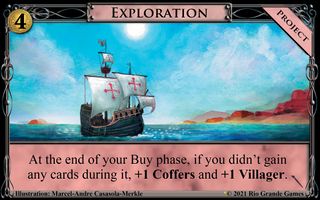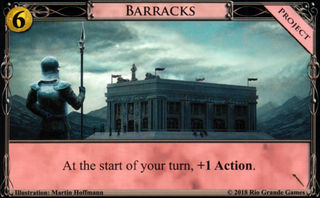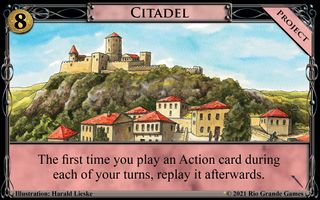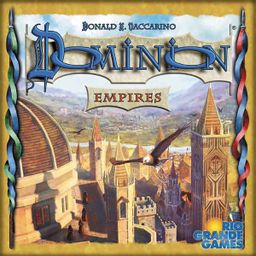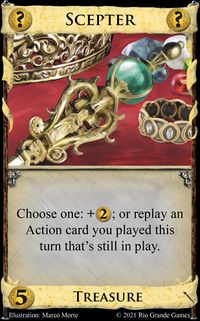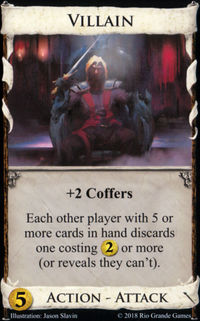Project

Projects, introduced in Renaissance, are permanent, buyable effects not attached to cards. Players can buy Projects during their Buy phase whenever they might instead buy a card or Event; if a player buys a Project, its bonus or special effect is activated for them for the rest of the game. When a player buys a Project, they put a wooden cube of their color on it, to track which Projects' effects they receive. Each player has only two cubes to put on Projects.
Projects are not Kingdom cards; including one or more Projects in a game does not count toward the 10 Kingdom card piles the Supply includes. In fact, Projects are not considered "cards" at all; any text referring to a "card" does not apply to Projects. However, the Project effects and costs are printed on cards in a landscape orientation with pink frames.
There are 20 Projects, any number of which may be used in a game of Dominion, though Donald X. recommends not using more than two total Projects, Events, Landmarks, Ways and Traits. When choosing a random Kingdom, the Projects may be shuffled into the randomizer deck or a separate sideways card deck.
Contents |
[edit] List of Projects
- Cathedral, City Gate, Pageant, Sewers, Star Chart
- Exploration, Fair, Silos, Sinister Plot
- Academy, Capitalism, Fleet, Guildhall, Piazza, Road Network
- Barracks, Crop Rotation, Innovation
- Canal
- Citadel
[edit] Official Rules
- Project cards are abilities that players may buy.
- You buy a Project in your Buy phase; it uses up a Buy, and costs a certain amount of , indicated on each Project in the corner.
- When buying a Project, place one of your cubes on it.
- For the rest of the game, you have that ability.
- For example when Fair is in the game, you can pay to put a cube on it; then for the rest of the game you will get +1 Buy on each of your turns.
- Normally there should be no more than two Projects in a game. If there are more, you still only get to place two cubes.
- You cannot place two cubes on the same Project.
- You cannot remove a cube from a Project once you have placed it.
- Any number of players can have the same Project ability at once.
- Paying for a Project is not "buying a card"; it is not made cheaper by cards like Inventor, and does not matter for cards like Exploration.
- You cannot pay for a Project while you have debt (from Empires).
[edit] Card gallery
[edit] Trivia
[edit] In other languages
| Language | Name | Text | |
|---|---|---|---|
| Dutch | Project |  |
Project |
| German | Projekt | ||
| Spanish | Proyecto |  |
Proyecto |
[edit] Preview
[edit] Secret History
[edit] Why can't you buy the same Project twice?






